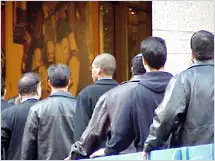Unemployment numbers may be worse than you think

Friday’s news that the official unemployment rate is now at a 26-year high of 9.4% is actually a rosy spin on what is really happening.
The official unemployment stat that gets the headline treatment, the BLS’ U-3 data set, doesn’t count all sorts of folks who are unemployed and underemployed.
To get a more comprehensive snapshot of the labor picture you need to focus on the less well-known U-6 data set known as “alternative measures of labor utilization.” The U-6 includes folks counted in U-3 plus “ all marginally attached workers” as well as people who aren’t working full-time but wish they were (i.e., the underemployed.) Marginally employed covers “persons who currently are neither working nor looking for work but indicate that they want and are available for a job and have looked for work sometime in the recent past.”
And when you add up U-3 and all the underutilized workers the official U-6 rate for May 2009 is 16.4%. That’s an official BLS-generated stat that no one really wants to talk about: One out of every six members of the civilian labor force is either out of work or not fully employed. (And that doesn’t even account for the rising ranks of workers coping with furloughs.)
Okay, so exactly how bad is that from a historical perspective? Pretty bad. The BLS began reporting U-6 in 1994; in January 1994 the U-6 rate was 11.8% and then steadily declined before reaching an all-time low in October 2000 of 6.8%. During the ensuing recession/bear market U-6 peaked at 10.4% (Sept 2003) until the credit crisis took hold in 2008. The U-6 rate hit 10.9% in August 2009 August 2008 and has been on a rapid climb ever since; over the past year it has shot from 9.8% to today’s 16.4%. It sure makes it hard to buy into the green shoots theory just yet.
--Carla Fried